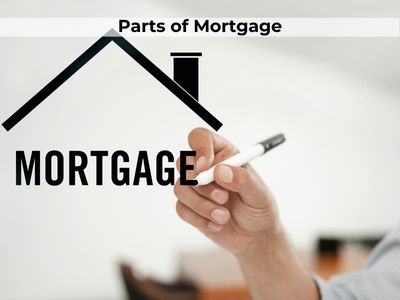If you apply for a mortgage, you will be required to repay it monthly; in other cases, repayments are bi-weekly, weekly, accelerated bi-weekly, and accelerated weekly. Your payment amount is relatively available by the different parts of the mortgage. What are the different parts of a mortgage, you ask? Let’s walk you through it.
Parts of Mortgage:
Principal
The principal is the amount you borrowed from your mortgage lender. It’s the final purchasing amount of the home minus your down payment. And as the monthly payment is made, your principal is also reduced. Also, the principal will accumulate interest as soon as you take out your mortgage. However, the longer you pay, the more considerable the amount is going towards your mortgage principal.
For instance, the purchasing amount of the home you want is $500,000. And you put in a 20% down payment, which is $100,000 of the purchasing amount. Your principal will be $400,000. Given that you get the 25-year amortization and five-year fixed-rate (4.69%), your monthly salary will be $2,256.
Remember, the first payment has the highest interest paid. The more you pay your mortgage, the higher amount is going toward your principal.
Putting a large amount on your mortgage annually will help you finish your mortgage quickly.
Mortgage Interest
The interest is the amount you pay the lender for borrowing their money. If you apply for a mortgage, you should shop for lenders because not all lenders will offer the same interest rate. Some lenders offer lower interest rates. And finding Canada’s best mortgage rate is the goal here.
Every time you renew your mortgage term, you can renegotiate your interest rate, meaning, it could be higher or lower on your next term. Lenders don’t guess your interest rate, there may be a base interest rate, but there are factors that determine your interest rate if it will be higher or you can get it lower.
Factors That Affect Your Interest Rate:
- Length of loan
- Lender’s current prime and posted rates
- The interest rate of your choice (fixed, variable)
- Credit history
- And if you’re self-employed
Lenders use prime rates to set their posted rates and can change regularly. Your lender can offer you prime plus one. If the interest rate is 3%, your interest rate will be 4% or 3% plus 1%.
The available rate can be seen on the lender’s website. They use the posted interest rate for advertising their product.
And discounted interest rates can save you thousands of money. You ask your lender if you qualify for a discount. Discounted interest rate is lower than the prime rate.
There are also types of interest rates you can choose from; Variable and Fixed Rates.
Variable Mortgage Rate
The variable rate has a lower interest rate because it fluctuates with the market. It is riskier for borrowers because they tend to have lower interest. Despite this, the variable rate is the most used interest rate.
Your mortgage repayment amount each month will not be affected. However, the amount that goes to your interest and principal does. For instance, if the interest rate rises, the amount that goes to your principal will decrease, and the amount that goes to your interest will increase, and vice versa.
Fixed Mortgage Rate
Fixed rates have higher interest rates than variable. Unlike variable rates, the fixed rate stays the same even if the interest rate rises or falls. You’ll feel secure about your finances as a result. You can predict your future budget because you don’t have to worry about the interest rate changing until your term.
Mortgage Term
The term is how long your contract is in effect. At the end of your term, you must pay your balance in full or renew your mortgage. The term includes your agreed interest rate in effect. Terms can be from a few months to five years or even longer.
Mortgage Amortization
Amortization is the time it takes to pay your mortgage in full. If your down payment is less than 20% of the purchasing amount of the home, you’re only available for up to 2-year amortization. If you have a 20% down payment, you can get up to 30-year amortization.
The more extended the amortization period, the lower your payments will be. However, remember that the longer your amortization period, the higher your total cost will be.
Do not get confused between term and amortization. The term is when your agreed interest is in effect and the amortization is the length of mortgage repayment.
Conclusion
The best mortgage lender for you is the lender who you’re compatible with. If you’re comfortable with your mortgage, that will be better because you can comfortably ask and negotiate your rate. Shopping for a lender is the way to find them.
Your home will be your biggest asset, and protecting it at all costs will be your priority. Deciding hastily should be out of the picture. Before you apply or decide to buy the house, make sure that you can hundred percent commit.




